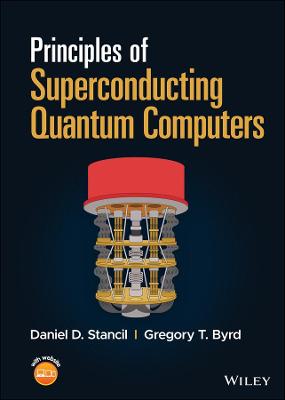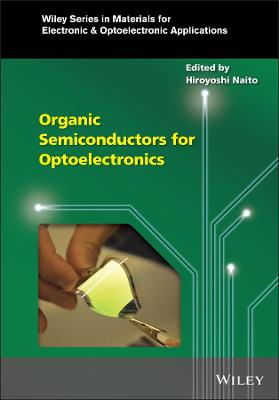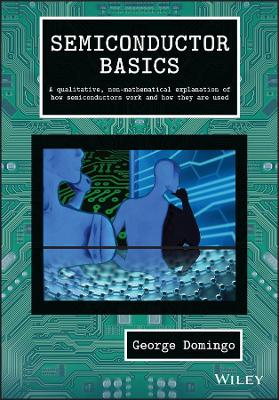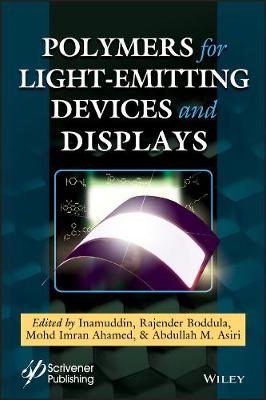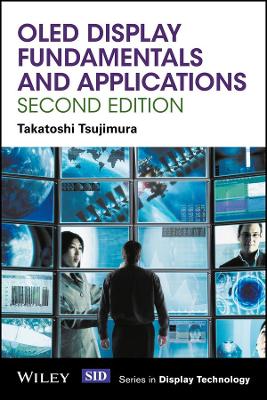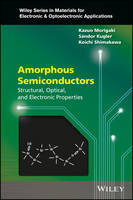Photoconductivity and Photoconductive Materials, 2 Volume Set
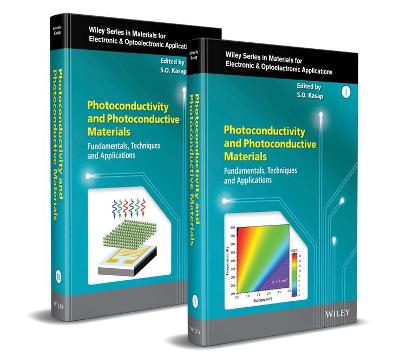 -15%
portes grátis
-15%
portes grátis
Photoconductivity and Photoconductive Materials, 2 Volume Set
Fundamentals, Techniques and Applications
Capper, Peter; Willoughby, Arthur; Kasap, Safa O.
John Wiley & Sons Inc
07/2022
912
Dura
Inglês
9781119579113
15 a 20 dias
2008
Preface xiii
Series Preface xvi
List of Contributors xvii
1 Photoconductivity: Fundamental Concepts 1
Safa O. Kasap
Abbreviations 1
1.1 Introduction 2
1.2 Major Photoconductivity Classifications 10
1.3 Dark Current and Electrical Contacts 13
1.3.1 Injecting Contacts 13
1.3.2 Noninjecting Contacts 18
1.4 Shockley-Ramo Theorem 24
1.5 Major Recombination Mechanism 27
1.5.1 Direct Recombination 27
1.5.2 Indirect Recombination in Semiconductors: Shockley-Read-Hall Model 30
1.5.2.1 Weak Photogeneration 33
1.5.2.2 Strong Photogeneration 36
1.5.3 Impact or Auger Recombination 37
1.6 Quasi-Fermi Levels and Distribution of Recombination Centers in Energy 39
1.6.1 Quasi-Fermi Levels for Free Carriers 39
1.6.2 Quasi-Fermi Levels (QFLs) for Trapped Carriers in the Presence of Localized States 40
1.6.3 Demarcation Energy and Dead Carriers 46
1.7 Elementary Photoconductor with Ohmic Contacts and Absorption Transverse to Applied Field 47
1.7.1 Elementary Photoconductivity Without Diffusion 47
1.7.2 Elementary Photoconductivity with Diffusion 51
1.8 Elementary Photoconductor with Noninjecting Contacts and Optical Absorption Along the Field 53
1.9 Absorbed Light Intensity with Rear Reflection 56
1.10 Photoconductive Gain 58
1.11 Effects of Traps on Photoconductivity 60
1.12 Sinusoidally Modulated Photoexcitation: Frequency-Resolved Photoconductivity 62
1.13 Noise in Photoconductors 69
Ackowledgments 78
References 78
2 Characterization of Semiconductors from Photoconductivity Techniques: Uniform and Monochromatic Illumination 89
Christophe Longeaud, Javier Schmidt, and Jean-Paul Kleider
2.1 Introduction 89
2.2 Steady-State Photoconductivity (SSPC) 92
2.2.1 Basic Equations 93
2.2.2 DOS Determination 96
2.2.3 Illustration by Means of Simulations 97
2.3 Modulated Photocurrent (MPC) 100
2.3.1 High-Frequency Regime (HF-MPC) 104
2.3.2 Low-Frequency Regime (LF-MPC) 106
2.3.3 Summary of the Two MPC Regimes 107
2.3.4 Illustration by Means of Simulations 108
2.3.5 Experimental Results 114
2.3.5.1 Application to a Crystalline Material 114
2.3.5.2 Application to Amorphous Thin Films 116
2.4 Conclusion 119
Symbols and Abbreviations 120
Acknowledgments 122
References 122
3 Characterization of Semiconductors from Photoconductivity Techniques: Uniform and Polychromatic Illumination 125
Christophe Longeaud, Javier Schmidt, and Jean-Paul Kleider
3.1 Introduction 125
3.2 The Constant Photocurrent Method (CPM) 126
3.2.1 CPM Principle 126
3.2.2 Absolute CPM 130
3.2.3 Determination of the DOS from a CPM Spectrum 131
3.2.3.1 Deconvolution of a CPM Spectrum 131
3.2.3.2 Calculation of the Excess Absorption 132
3.2.3.3 Absorption at a Single Energy 132
3.2.4 Limits of the CPM 133
3.2.5 AC CPM vs. DC CPM 133
3.3 The Fourier-Transform Photocurrent Spectroscopy (FTPS) 134
3.3.1 FTPS Bases 134
3.3.2 FTPS Bench 137
3.3.3 Experimental Results 138
3.3.3.1 Comparison of Calibrations with Transmitted or Direct Flux 138
3.3.3.2 Comparison of FTPS Performed on Thin Films and Solar Cells 140
3.3.3.3 Application of FTPS to the Study of Perovskite Thin Films 143
3.4 Conclusion 147
Symbols and Abbreviations 147
Acknowledgments 148
References 149
4 Characterization of Semiconductors from Photoconductivity Techniques: Photocarrier Grating Techniques 151
Christophe Longeaud, Javier Schmidt, and Jean-Paul Kleider
4.1 Introduction 151
4.2 Steady-State Photocarrier Grating (SSPG) 154
4.2.1 Fundamentals 154
4.2.2 Description of an Automated SSPG Bench 157
4.2.3 Use of the SSPG Technique to Derive the DOS 159
4.3 Modulated Photocarrier Grating (MPG) 162
4.4 Moving Grating Technique (MGT) 164
4.5 Oscillating Photocarrier Grating (OPG) 167
4.6 DOS Determination from the Small Signal Recombination Lifetime 171
4.7 Conclusions 174
Symbols and Abbreviations 175
Acknowledgments 177
References 177
5 Time-of-Flight Transient Photoconductivity Technique 179
Safa O. Kasap
5.1 Basic Principles 179
5.2 Shallow Traps, Effective Drift Mobility, and Effective Lifetime 187
5.2.1 Effective Drift Mobility 187
5.2.2 Deep Trapping in the Presence of Shallow Traps 192
5.3 Exponential Absorption: exp(??x) 195
5.4 Continuity Equation Formalism Under Multiple Trapping 197
5.5 Generalized Quasi-equilibrium Transport 202
5.6 Anomalous Dispersion and Thickness Dependent TOF Drift Mobility 206
5.7 Experimental Implementation and Artifacts 212
5.7.1 Single-Shot TOF Experiments and Apparatus 213
5.7.2 Operational Definition of Transit Time 215
5.7.3 Finite Photogeneration Depth (?) 219
5.7.4 Finite Photoexcitation Duration 220
5.7.5 Maximum I-Mode and V -Mode Signals 221
5.7.6 RC Time Constant and Instrument Bandwidth 222
5.8 Xerographic Time-of-Flight Experiment 223
5.9 Lateral or Coplanar Time-of-Flight (CTOF) 226
5.10 Time-of-Flight Study of Recombination: Double Photoexcitation 228
5.11 Interrupted Field Time-of-Flight (IFTOF) 231
5.12 Space Charge Perturbed Photocurrents 234
5.13 Charge Collection Efficiency (CCE) 237
5.14 Monte Carlo Simulation of Carrier Transport 241
Acknowledgments 245
References 245
6 Transient Photocurrent of Disordered Semiconducting Thin Films with Coplanar Electrode Configurations 253
Hayate Fujimura, Takashi Nagase, and Hiroyoshi Naito
6.1 Introduction 253
6.2 Theory of Laplace Transform Methods 255
6.2.1 Determination of Localized-State Distribution 255
6.2.2 Determination of Localized-State Distribution with High Energy Resolution 258
6.2.3 Determination of Free Carrier Lifetime 259
6.2.4 Determination of Drift Mobility 260
6.2.4.1 Uniform Optical Excitation Between Coplanar Electrodes with a Blocking Contact 260
6.2.4.2 Optical Excitation Near an Electrode 261
6.3 Numerical Calculation of Transient Photocurrent 261
6.3.1 Localized-State Distribution 261
6.3.2 Free Carrier Lifetime 266
6.3.3 Drift Mobility 266
6.3.3.1 Uniform Excitation 266
6.3.3.2 Local Excitation 268
6.4 Experimental Results 269
6.4.1 Localized-State Distribution 269
6.4.2 Free Carrier Lifetime 270
6.4.3 Drift Mobility 271
6.4.3.1 Uniform Excitation 271
6.4.3.2 Local Excitation 271
6.5 Conclusions 272
References 273
7 Organic Photoconductors: Photogeneration, Transport, and Applications in Printing 275
David S. Weiss
7.1 Introduction: Organic Photoconductors (OPC) 275
7.1.1 OPC Structure, Photodischarge Physics, and Process Considerations 276
7.2 History of Electrophotography and OPC Developments 281
7.2.1 Electrophotography 281
7.2.2 Electrophotographic Copying and Printing 282
7.2.3 OPC Development 283
7.3 OPC Photogeneration Efficiency and Mechanisms 287
7.3.1 OPC Charge Generation: Hole Transporting Materials (Aromatic Amines) 289
7.3.2 OPC Charge Generation: Molecular Complexes 290
7.3.2.1 PVK-TNF 291
7.3.2.2 Dye-Polymer Aggregate 294
7.3.3 OPC Charge Generation: Pigments 295
7.3.3.1 Azo Pigments 296
7.3.3.2 Phthalocyanine Pigments 297
7.3.3.3 Perylene Pigments 300
7.3.3.4 Squaraine Pigments 301
7.3.4 Summary of Charge Generation Mechanism in OPCs 301
7.4 Dark Conductivity 303
7.5 Charge Transport 304
7.5.1 Charge Transport Experimental Methods 304
7.5.2 Theory: Charge Transport in Organic Semiconductors 307
7.5.3 Charge Transport in Molecularly Doped Polymers (MDP) and Polymers 312
7.5.3.1 Hole Transport: MDPs and Polymers 312
7.5.3.2 Electron Transport: MDPs and Polymers 314
7.5.3.3 Bipolar Transport: MDPs and Polymers 315
7.6 Charge Transport Disruptions 317
7.6.1 Medium and Polarity Effects 317
7.6.2 Charge Trapping 318
7.7 OPC Charge Transport 318
7.7.1 Disruptions of OPC Functionality 320
7.7.1.1 OPC Photofatigue 321
7.7.1.2 OPC Corona Chemical Fatigue 322
7.8 OPC New Materials Applications 324
7.9 OPC New Printing Applications and Future Developments 326
7.9.1 Current OPC Printing Applications 326
7.9.2 New OPC Printing Applications 327
References 328
8 Charge Extraction by Linearly Increasing Voltage (CELIV) Method for Investigation of Charge Carrier Transport and Recombination in Disordered Materials 339
Oleksandr Grynko, Gytis Juska, and Alla Reznik
8.1 Introduction 339
8.2 Charge Extraction by Linearly Increasing Voltage (CELIV) Technique 341
8.2.1 Dark-CELIV 341
8.2.2 Dark-CELIV Measurements in Low-Conductivity Materials 344
8.2.3 Dark-CELIV Measurements in High-Conductivity Materials 345
8.3 Photo-CELIV 349
8.3.1 Photo-CELIV: Surface vs. Bulk Photogeneration 351
8.3.2 Photo-CELIV in the Case of Langevin Recombination 354
8.3.3 Photo-CELIV in the Case of Electric Field-Dependent Mobility 357
8.3.4 Analysis of Photo-CELIV for Dispersive Transport 359
8.4 i-CELIV 361
8.5 Summary 367
References 367
9 Terahertz Photoconductivity 369
David G. Cooke
9.1 THz Pulses 369
9.2 Drude Conductivity of Free Charges 371
9.3 ac Conductivity of Bound Charges: Lorentz Response 373
9.4 Generation and Detection Techniques 373
9.4.1 Photoconductive Switches 373
9.4.2 Nonlinear Generation and Detection of THz Pulses 375
9.4.3 Tilted Pulse Front Optical Rectification 376
9.4.4 Ultra-Broadband THz Pulses 378
9.4.5 Air Plasma Generation and Detection 378
9.5 Terahertz Spectroscopy 379
9.5.1 Time-Domain THz Spectroscopy 379
9.5.2 Time-Resolved THz Spectroscopy 381
9.6 Transient Photoconductivity: Semiconductors 384
9.6.1 Carrier Trapping and Diffusion 387
9.6.2 Plasmon and Optical Phonon Dynamics 388
9.6.3 Polarons 390
9.6.4 Excitons 392
9.6.5 Semiconductor Nanostructures 394
9.7 Conclusions 396
References 397
Volume 2
Preface xiii
Series Preface xvii
List of Contributors xix
10 Photoconductive Materials 399
Alan Owens
11 Photoconductivity of Nanowire Systems 493
Harry E. Ruda
12 Photoconductivity of Semiconductor Nanocrystals 523
Richard J. Curry
13 Persistent Photocurrents and Defects 549
Ruben J. Freitas and Koichi Shimakawa
14 Photoconductivity in the Infrared: Mercury Cadmium Telluride 577
Peter Capper
15 X-ray Photoconductivity and Typical Large-Area X-ray Photoconductors 613
Zahangir Kabir
16 Progress in Lead Oxide X-Ray Photoconductive Layers 643
Oleksandr Grynko and Alla Reznik
17 Diamond Radiation Detectors 689
Gabriele Chiodini and Maurizio Martino
18 Doped and Stabilized Amorphous Selenium Single and Multilayer Photoconductive Layers for X-Ray Imaging Detector Applications 715
Safa O. Kasap
19 Metal Halide Perovskites for Photodetection 781
Qianqian Lin
20 Photoconductive Antennas for Terahertz Applications 807
Roger Lewis
21 Phthalocyanines: A Class of Organic Photoconductive Materials 831
Asim K. Ray, Debdyuti Mukherjee, and Sujoy Sarkar
Index 853
Preface xiii
Series Preface xvi
List of Contributors xvii
1 Photoconductivity: Fundamental Concepts 1
Safa O. Kasap
Abbreviations 1
1.1 Introduction 2
1.2 Major Photoconductivity Classifications 10
1.3 Dark Current and Electrical Contacts 13
1.3.1 Injecting Contacts 13
1.3.2 Noninjecting Contacts 18
1.4 Shockley-Ramo Theorem 24
1.5 Major Recombination Mechanism 27
1.5.1 Direct Recombination 27
1.5.2 Indirect Recombination in Semiconductors: Shockley-Read-Hall Model 30
1.5.2.1 Weak Photogeneration 33
1.5.2.2 Strong Photogeneration 36
1.5.3 Impact or Auger Recombination 37
1.6 Quasi-Fermi Levels and Distribution of Recombination Centers in Energy 39
1.6.1 Quasi-Fermi Levels for Free Carriers 39
1.6.2 Quasi-Fermi Levels (QFLs) for Trapped Carriers in the Presence of Localized States 40
1.6.3 Demarcation Energy and Dead Carriers 46
1.7 Elementary Photoconductor with Ohmic Contacts and Absorption Transverse to Applied Field 47
1.7.1 Elementary Photoconductivity Without Diffusion 47
1.7.2 Elementary Photoconductivity with Diffusion 51
1.8 Elementary Photoconductor with Noninjecting Contacts and Optical Absorption Along the Field 53
1.9 Absorbed Light Intensity with Rear Reflection 56
1.10 Photoconductive Gain 58
1.11 Effects of Traps on Photoconductivity 60
1.12 Sinusoidally Modulated Photoexcitation: Frequency-Resolved Photoconductivity 62
1.13 Noise in Photoconductors 69
Ackowledgments 78
References 78
2 Characterization of Semiconductors from Photoconductivity Techniques: Uniform and Monochromatic Illumination 89
Christophe Longeaud, Javier Schmidt, and Jean-Paul Kleider
2.1 Introduction 89
2.2 Steady-State Photoconductivity (SSPC) 92
2.2.1 Basic Equations 93
2.2.2 DOS Determination 96
2.2.3 Illustration by Means of Simulations 97
2.3 Modulated Photocurrent (MPC) 100
2.3.1 High-Frequency Regime (HF-MPC) 104
2.3.2 Low-Frequency Regime (LF-MPC) 106
2.3.3 Summary of the Two MPC Regimes 107
2.3.4 Illustration by Means of Simulations 108
2.3.5 Experimental Results 114
2.3.5.1 Application to a Crystalline Material 114
2.3.5.2 Application to Amorphous Thin Films 116
2.4 Conclusion 119
Symbols and Abbreviations 120
Acknowledgments 122
References 122
3 Characterization of Semiconductors from Photoconductivity Techniques: Uniform and Polychromatic Illumination 125
Christophe Longeaud, Javier Schmidt, and Jean-Paul Kleider
3.1 Introduction 125
3.2 The Constant Photocurrent Method (CPM) 126
3.2.1 CPM Principle 126
3.2.2 Absolute CPM 130
3.2.3 Determination of the DOS from a CPM Spectrum 131
3.2.3.1 Deconvolution of a CPM Spectrum 131
3.2.3.2 Calculation of the Excess Absorption 132
3.2.3.3 Absorption at a Single Energy 132
3.2.4 Limits of the CPM 133
3.2.5 AC CPM vs. DC CPM 133
3.3 The Fourier-Transform Photocurrent Spectroscopy (FTPS) 134
3.3.1 FTPS Bases 134
3.3.2 FTPS Bench 137
3.3.3 Experimental Results 138
3.3.3.1 Comparison of Calibrations with Transmitted or Direct Flux 138
3.3.3.2 Comparison of FTPS Performed on Thin Films and Solar Cells 140
3.3.3.3 Application of FTPS to the Study of Perovskite Thin Films 143
3.4 Conclusion 147
Symbols and Abbreviations 147
Acknowledgments 148
References 149
4 Characterization of Semiconductors from Photoconductivity Techniques: Photocarrier Grating Techniques 151
Christophe Longeaud, Javier Schmidt, and Jean-Paul Kleider
4.1 Introduction 151
4.2 Steady-State Photocarrier Grating (SSPG) 154
4.2.1 Fundamentals 154
4.2.2 Description of an Automated SSPG Bench 157
4.2.3 Use of the SSPG Technique to Derive the DOS 159
4.3 Modulated Photocarrier Grating (MPG) 162
4.4 Moving Grating Technique (MGT) 164
4.5 Oscillating Photocarrier Grating (OPG) 167
4.6 DOS Determination from the Small Signal Recombination Lifetime 171
4.7 Conclusions 174
Symbols and Abbreviations 175
Acknowledgments 177
References 177
5 Time-of-Flight Transient Photoconductivity Technique 179
Safa O. Kasap
5.1 Basic Principles 179
5.2 Shallow Traps, Effective Drift Mobility, and Effective Lifetime 187
5.2.1 Effective Drift Mobility 187
5.2.2 Deep Trapping in the Presence of Shallow Traps 192
5.3 Exponential Absorption: exp(??x) 195
5.4 Continuity Equation Formalism Under Multiple Trapping 197
5.5 Generalized Quasi-equilibrium Transport 202
5.6 Anomalous Dispersion and Thickness Dependent TOF Drift Mobility 206
5.7 Experimental Implementation and Artifacts 212
5.7.1 Single-Shot TOF Experiments and Apparatus 213
5.7.2 Operational Definition of Transit Time 215
5.7.3 Finite Photogeneration Depth (?) 219
5.7.4 Finite Photoexcitation Duration 220
5.7.5 Maximum I-Mode and V -Mode Signals 221
5.7.6 RC Time Constant and Instrument Bandwidth 222
5.8 Xerographic Time-of-Flight Experiment 223
5.9 Lateral or Coplanar Time-of-Flight (CTOF) 226
5.10 Time-of-Flight Study of Recombination: Double Photoexcitation 228
5.11 Interrupted Field Time-of-Flight (IFTOF) 231
5.12 Space Charge Perturbed Photocurrents 234
5.13 Charge Collection Efficiency (CCE) 237
5.14 Monte Carlo Simulation of Carrier Transport 241
Acknowledgments 245
References 245
6 Transient Photocurrent of Disordered Semiconducting Thin Films with Coplanar Electrode Configurations 253
Hayate Fujimura, Takashi Nagase, and Hiroyoshi Naito
6.1 Introduction 253
6.2 Theory of Laplace Transform Methods 255
6.2.1 Determination of Localized-State Distribution 255
6.2.2 Determination of Localized-State Distribution with High Energy Resolution 258
6.2.3 Determination of Free Carrier Lifetime 259
6.2.4 Determination of Drift Mobility 260
6.2.4.1 Uniform Optical Excitation Between Coplanar Electrodes with a Blocking Contact 260
6.2.4.2 Optical Excitation Near an Electrode 261
6.3 Numerical Calculation of Transient Photocurrent 261
6.3.1 Localized-State Distribution 261
6.3.2 Free Carrier Lifetime 266
6.3.3 Drift Mobility 266
6.3.3.1 Uniform Excitation 266
6.3.3.2 Local Excitation 268
6.4 Experimental Results 269
6.4.1 Localized-State Distribution 269
6.4.2 Free Carrier Lifetime 270
6.4.3 Drift Mobility 271
6.4.3.1 Uniform Excitation 271
6.4.3.2 Local Excitation 271
6.5 Conclusions 272
References 273
7 Organic Photoconductors: Photogeneration, Transport, and Applications in Printing 275
David S. Weiss
7.1 Introduction: Organic Photoconductors (OPC) 275
7.1.1 OPC Structure, Photodischarge Physics, and Process Considerations 276
7.2 History of Electrophotography and OPC Developments 281
7.2.1 Electrophotography 281
7.2.2 Electrophotographic Copying and Printing 282
7.2.3 OPC Development 283
7.3 OPC Photogeneration Efficiency and Mechanisms 287
7.3.1 OPC Charge Generation: Hole Transporting Materials (Aromatic Amines) 289
7.3.2 OPC Charge Generation: Molecular Complexes 290
7.3.2.1 PVK-TNF 291
7.3.2.2 Dye-Polymer Aggregate 294
7.3.3 OPC Charge Generation: Pigments 295
7.3.3.1 Azo Pigments 296
7.3.3.2 Phthalocyanine Pigments 297
7.3.3.3 Perylene Pigments 300
7.3.3.4 Squaraine Pigments 301
7.3.4 Summary of Charge Generation Mechanism in OPCs 301
7.4 Dark Conductivity 303
7.5 Charge Transport 304
7.5.1 Charge Transport Experimental Methods 304
7.5.2 Theory: Charge Transport in Organic Semiconductors 307
7.5.3 Charge Transport in Molecularly Doped Polymers (MDP) and Polymers 312
7.5.3.1 Hole Transport: MDPs and Polymers 312
7.5.3.2 Electron Transport: MDPs and Polymers 314
7.5.3.3 Bipolar Transport: MDPs and Polymers 315
7.6 Charge Transport Disruptions 317
7.6.1 Medium and Polarity Effects 317
7.6.2 Charge Trapping 318
7.7 OPC Charge Transport 318
7.7.1 Disruptions of OPC Functionality 320
7.7.1.1 OPC Photofatigue 321
7.7.1.2 OPC Corona Chemical Fatigue 322
7.8 OPC New Materials Applications 324
7.9 OPC New Printing Applications and Future Developments 326
7.9.1 Current OPC Printing Applications 326
7.9.2 New OPC Printing Applications 327
References 328
8 Charge Extraction by Linearly Increasing Voltage (CELIV) Method for Investigation of Charge Carrier Transport and Recombination in Disordered Materials 339
Oleksandr Grynko, Gytis Juska, and Alla Reznik
8.1 Introduction 339
8.2 Charge Extraction by Linearly Increasing Voltage (CELIV) Technique 341
8.2.1 Dark-CELIV 341
8.2.2 Dark-CELIV Measurements in Low-Conductivity Materials 344
8.2.3 Dark-CELIV Measurements in High-Conductivity Materials 345
8.3 Photo-CELIV 349
8.3.1 Photo-CELIV: Surface vs. Bulk Photogeneration 351
8.3.2 Photo-CELIV in the Case of Langevin Recombination 354
8.3.3 Photo-CELIV in the Case of Electric Field-Dependent Mobility 357
8.3.4 Analysis of Photo-CELIV for Dispersive Transport 359
8.4 i-CELIV 361
8.5 Summary 367
References 367
9 Terahertz Photoconductivity 369
David G. Cooke
9.1 THz Pulses 369
9.2 Drude Conductivity of Free Charges 371
9.3 ac Conductivity of Bound Charges: Lorentz Response 373
9.4 Generation and Detection Techniques 373
9.4.1 Photoconductive Switches 373
9.4.2 Nonlinear Generation and Detection of THz Pulses 375
9.4.3 Tilted Pulse Front Optical Rectification 376
9.4.4 Ultra-Broadband THz Pulses 378
9.4.5 Air Plasma Generation and Detection 378
9.5 Terahertz Spectroscopy 379
9.5.1 Time-Domain THz Spectroscopy 379
9.5.2 Time-Resolved THz Spectroscopy 381
9.6 Transient Photoconductivity: Semiconductors 384
9.6.1 Carrier Trapping and Diffusion 387
9.6.2 Plasmon and Optical Phonon Dynamics 388
9.6.3 Polarons 390
9.6.4 Excitons 392
9.6.5 Semiconductor Nanostructures 394
9.7 Conclusions 396
References 397
Volume 2
Preface xiii
Series Preface xvii
List of Contributors xix
10 Photoconductive Materials 399
Alan Owens
11 Photoconductivity of Nanowire Systems 493
Harry E. Ruda
12 Photoconductivity of Semiconductor Nanocrystals 523
Richard J. Curry
13 Persistent Photocurrents and Defects 549
Ruben J. Freitas and Koichi Shimakawa
14 Photoconductivity in the Infrared: Mercury Cadmium Telluride 577
Peter Capper
15 X-ray Photoconductivity and Typical Large-Area X-ray Photoconductors 613
Zahangir Kabir
16 Progress in Lead Oxide X-Ray Photoconductive Layers 643
Oleksandr Grynko and Alla Reznik
17 Diamond Radiation Detectors 689
Gabriele Chiodini and Maurizio Martino
18 Doped and Stabilized Amorphous Selenium Single and Multilayer Photoconductive Layers for X-Ray Imaging Detector Applications 715
Safa O. Kasap
19 Metal Halide Perovskites for Photodetection 781
Qianqian Lin
20 Photoconductive Antennas for Terahertz Applications 807
Roger Lewis
21 Phthalocyanines: A Class of Organic Photoconductive Materials 831
Asim K. Ray, Debdyuti Mukherjee, and Sujoy Sarkar
Index 853


